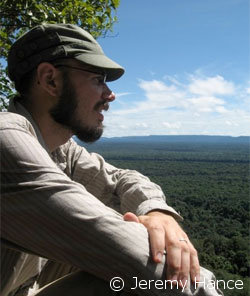
The book, “Life is Good: Conservation in the Age of Mass Extinction”, takes both a micro and macro look at the global biodiversity crisis, including the many ways conservationists are working tirelessly to save species from an untimely extinction.
The book’s opening essay explores the author’s personal encounter with one of the world’s rarest big mammals: the Sumatran rhino. Another details new conservation efforts to save the solenodon from extinction – one of the world’s weirdest animals with venomous fangs and an ancient lineage – while a third essay shows how camera traps are changing the way conservationists study species, including the rarely-seen pygmy hippo.
“I’ve been following EDGE’s work closely since the program kicked-off in 2007,” author Jeremy Hance said. “I loved the fact that they used a scientific method to determine conservation targets, rather than simply choosing animals based on fundraising appeal. I’m all in favor of conservation efforts for tigers and elephants, but the myopic focus on beautiful species has left many of the world’s most vulnerable, and I might say most interesting, animals in the dark. EDGE is helping to change that.”
One essay in the book, entitled What if Noah Had Left Behind the Ugly Ones, explores recent research that shows how humans are attracted to “appealing” animals and how that has undercut conservation efforts. The essay ends with a look at the innovative way that the EDGE program approaches its conservation work.
“To anyone who reads my articles on mongabay.com frequently, it’s no surprise that EDGE’s work ended up in so many of the essays for the book,” Hance continues, “Part of the job of a journalist is to shine light on stories and places that have been neglected, and that’s something EDGE does. But even while some of the essays in the book focus on single species, my overall hope is to get people to think about the global biodiversity problem. What will happen to human beings if we lose the bulk of the world’s species? Cutting-edge programs like EDGE are beginning to provide new solutions to this massive global dilemma.”

Other essays in the book focus on the importance of top predators, the state of the world’s oceans, vanished species over the past decade, and a new theory on how humans quickly forget vanished wilderness and species.
“I admit people may find sections of the book depressing and even alarming,” Hance says, “However, the thrust of the book really is that ‘life is good’ and must be saved not only for the functioning of ecosystems, but for the simple joy and wonder we find in nature everyday. We have inherited a truly marvelous world and our top priority should be to keep it that way.”
For stockists of “Life is Good: Conservation in an Age of Mass Extinction” click here.